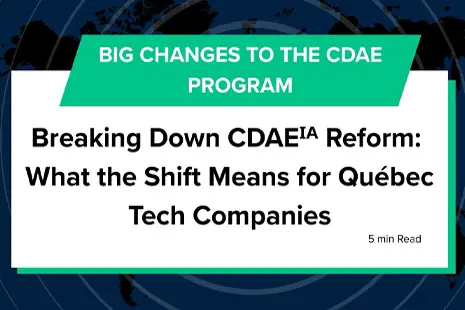After pitching changes to Form 6765 back in September 2023 (and fielding a wealth of feedback), the United States Internal Revenue Service (IRS) released a new draft of Form 6765 this past week that aims to simplify the process for capturing R&D tax credits stateside.
For starters, Form 6765 is your business’ application for the US federal government’s Credit for Increasing Research Activities, also known as the Research Credit.
As we recently covered on the blog, businesses claiming the Research Credit were already getting used to Form 6765 changes that were introduced back in 2021. These included the need to provide a “written statement” rather than a “production of documents” (ie. give the IRS a narrative of your innovation), as well as unit-by-unit details of your R&D’s ROI.
With the latest changes to Form 6765, the IRS has scaled back a bit of the burden of proof for smaller businesses claiming the Research Credit, while also more clearly defining key criteria necessary for tax administration.
Section G reporting optional for QSBs
One of the primary changes claimants will notice is that the Business Component Detail has moved from Section F (September) to Section G for the June 2024 iteration of Form 6765.
While the amount of detail outlined in the previous Section F was expansive (ie. detailing quantitative and qualitative data for qualifying business components), it will now only be an optional component of the application for:
- Qualified Small Business (QSB) taxpayers who opt to claim a reduced payroll tax credit
- Taxpayers with total qualified research expenditures (QREs) equal to or less than $1.5 million, and equal to or less than $50 million of gross receipts, claiming a research credit on an original filed return.
The IRS also listened to feedback around the sheer number of business components that must be reported on Section G: While claimants must report 80 percent of the total Qualified Research Expenditures (QREs) per business component, no more than 50 business components total are now required.
Small caveat: There are special instructions for taxpayers using the ASC 730 directive who can report ASC 730 QREs as a single line item on Section G.
The IRS also scaled back the level of detail required for reporting on each business component full stop. Businesses no longer need to identify whether a component is new or improved, if it’s a sale/license/lease scenario, or provide the “narrative requirement” that describes the information “sought to be discovered” in the revised Section G
Given the big switch in protocol that these changes to Form 6765 introduce, the entire revised Section G will be optional for all filers in tax year 2024 (processing year 2025) so that both claimants and the IRS can get acquainted with the new requirements.
And while the new Form 6765 will somewhat simplify the process of claiming the Research Credit for a wide swath of taxpayers, navigating the IRS tax code is still an often complex process that can bog down any finance or R&D team.
Boast helps teams better organize and qualify their R&D activities throughout the year, syncing key workflow, payroll and financial data into a single system of R&D intelligence. This empowers you to actively and passively understand where your R&D investments are paying off, while proactively gathering all the components you need to claim the innovation tax credits your team deserves.
To learn more about how Boast can help you maximize your R&D tax claim while optimizing your processes, talk to an expert today.
Form 6765 June 2024 FAQ
- What are the latest changes to IRS Form 6765 for the Research Credit? The IRS has released a new draft of Form 6765 that aims to simplify the process for claiming R&D tax credits. Key changes include moving the Business Component Detail to Section G and making this section optional for certain businesses. The IRS has also reduced the level of detail required for reporting on each business component.
- For which businesses is Section G reporting now optional? Section G reporting is now optional for:
- Qualified Small Business (QSB) taxpayers opting to claim a reduced payroll tax credit
- Taxpayers with total qualified research expenditures (QREs) equal to or less than $1.5 million, and equal to or less than $50 million of gross receipts, claiming a research credit on an original filed return
- What are the changes to the number of business components that must be reported? While claimants must report 80% of the total Qualified Research Expenditures (QREs) per business component, the maximum number of business components required to be reported is now capped at 50.
- How has the level of detail required for reporting on each business component changed? The IRS has scaled back the detail required. Businesses no longer need to identify whether a component is new or improved, if it’s a sale/license/lease scenario, or provide the “narrative requirement” that describes the information “sought to be discovered” in the revised Section G.
- When will these changes take effect? The revised Section G will be optional for all filers in tax year 2024 (processing year 2025). This allows both claimants and the IRS time to become familiar with the new requirements before they become mandatory.


